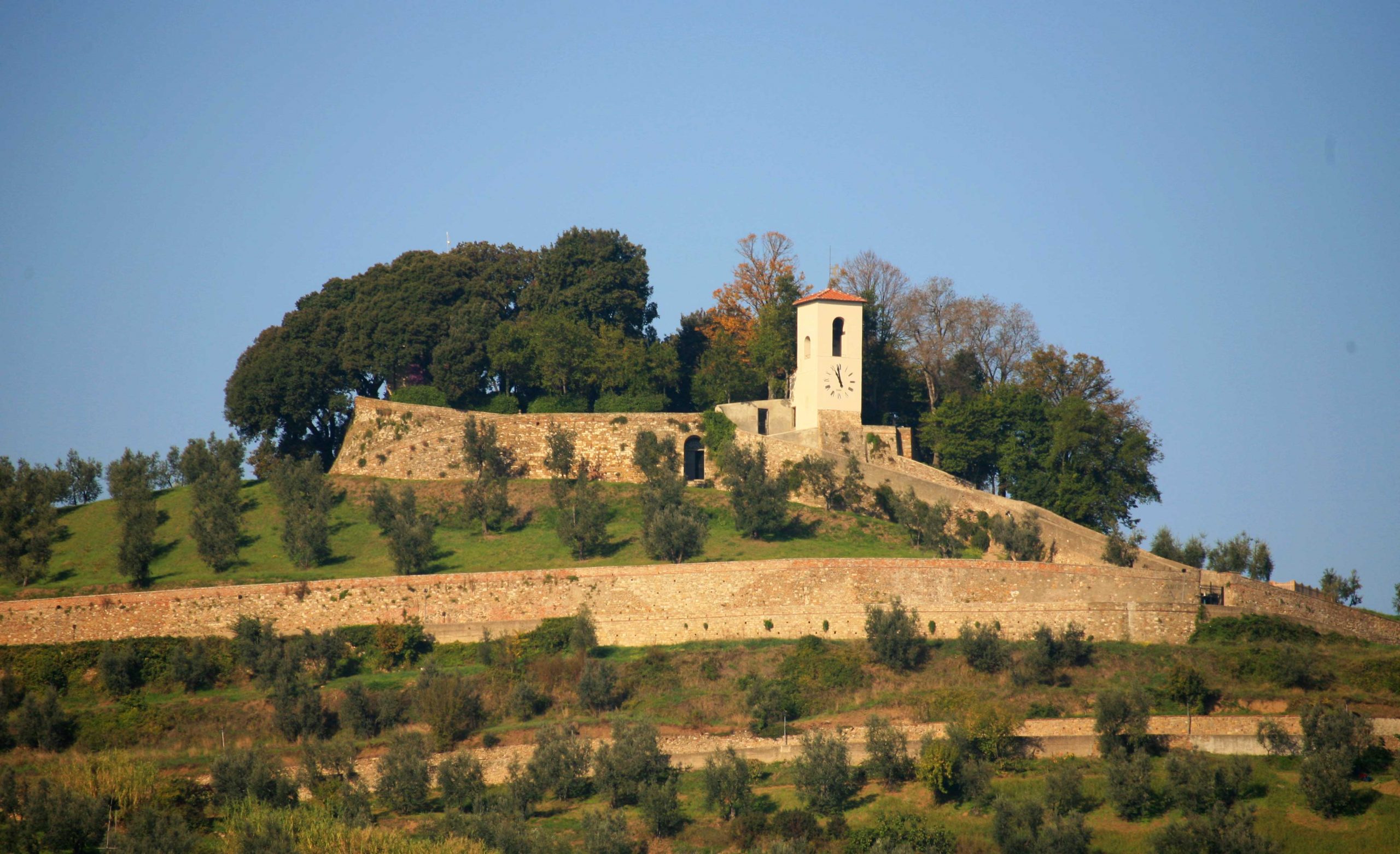La Rocca, or Castello, of Carmignano has been the object of many contestations and numerous battles due to its privileged position of control of the surrounding area- overlooking the border of the city-states of Florence, Pistoia and Prato- and the direct traffic that comes from Northern Italy.
The oldest traces of a Court at Carmignano is contained in a document from 998 where Ottone III di Sassonia donated this piece of land to the Church of Pistoia. At this point it became necessary to construct a fortified structure, and in the XII century the construction of the surrounding area. The Florentines were able to subtract the Rocca from Ildebrando, bishop of Pistoia, but Pistoia was able to regain control in 1125.
Between 1228 and 1237 the Florentine army was able to put the Roicca under siege and the destroyed the Castello and tower. A few years later (1242) Pistoia was able to conquer Carmignano again and it became a rural area.
At the beginning of the Trecento the Castello was given to the Florentines by Musciatto Franzesi and once again they destroyed the Rocca and the walls.
In 1315 Carmignono came under the dominion of Pistoia again until Florence reconquered it in 1324, at the request of the citizens who couldn’t stand the tyranny of Filippo Tedici.
In 1325 the Rocca was conquered by the ruler of Luca Castruccio Castracani, an ally of Tedici, and he decided to add more fortification. 1343 Carmignano together with Artimino and Baccereto were once again conquered by Firenze this time forever (or at least until modern times when the entire province came under the control of Prato). At this time the Rocca had a Palazzo Pretorio and a governor.
Making a chronological jump we can move directly to the 1800s when, following a fight between the City and the Cremoncini family for control of the Rocca and the surrounding area, the latter obtained possession that until the beginning of the Nineteen hundreds, when it passed on the the Petroni brothers. The last private owner of the Rocca was Umbertto Bigagli and he sold it to the City.
The few remains of the Rocca, that have remained standing after centuries of fighting and destruction were partially demolished in 1827; after which the few remains underwent restoration and reconstruction.
The defensive walls are all that remains of the external construction that dates to the Trecento and Quattrocento. They have been partially integrated and reconstructed in the following centuries. The Belltower (built in the Cinquecento on an existing structure) was placed in correspondence with the entrance to the structure and characterized by a bell and a clock , which was restored for the first time in the Eighteen hundreds and again in 1912. Inside the Trecento walls there is a small square building that was built in the Eighteen hundreds on the base of a medieval tower (the so-called Male Rocca) around which a second wall, which was originally connected directly to the tower, is still conserved.
The ascent to the di Carmignano is a must for any tourist who wants to understand the history of this area and its people and. The Rocca provides a breathtaking view of the landscape and the valley where Firenze, Prato and Pistoia meet. Inside the Rocca, there is a wonderful garden and the underground rooms have been conserved. There is a model of how the Rocca looked and a reconstruction of the Quattrocento kitchen and photographs of Carmignano from the beginning of the century along with agricultural tools that allow us to understand how farmers once lived.





